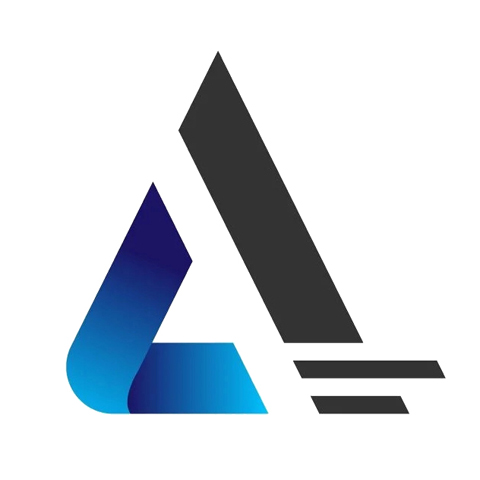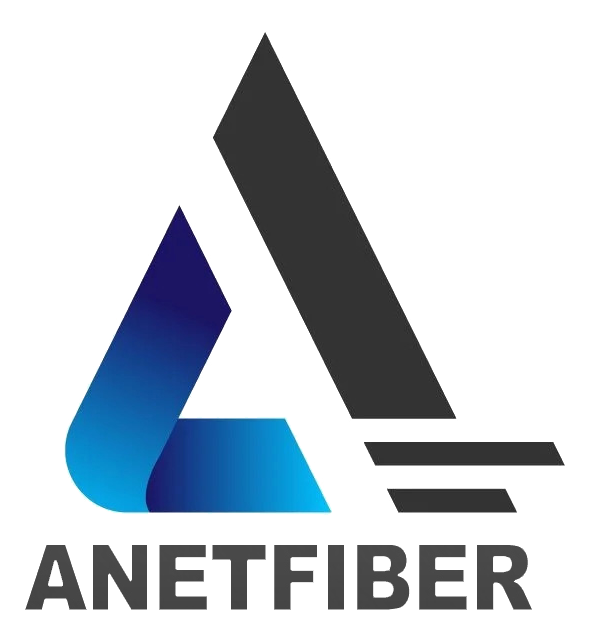Inside Look: Developing Fiber Optic Cable Standards and Regulations

My Journey into the World of Fiber Optic Standards
As I embarked on my journey into the realm of Fiber Optic technology, I was quickly introduced to the critical significance of Standards and Regulations. It became evident that these guidelines were not mere formalities but rather the backbone of ensuring quality, safety, and reliability within the industry.
Discovering the Significance of Standards and Regulations
One particular instance stands out vividly in my memory, underscoring the importance of adhering to Fiber Optic standards. During a routine inspection at a data center, I encountered a network setup that deviated from established standards. This non-compliance resulted in signal loss and compromised network performance. It was a stark reminder of how crucial it is to uphold industry standards for seamless operations.
Why Standards and Regulations Matter
The adherence to Standards and Regulations is paramount in guaranteeing the integrity and longevity of Fiber Optic systems. By following these guidelines diligently, we can ensure that every component, from cables to connectors, meets stringent quality benchmarks. Moreover, these regulations play a pivotal role in safeguarding user safety by minimizing potential hazards associated with substandard equipment.
Understanding the Basics of Fiber Optic Standards and Regulations
As I delved deeper into the world of Fiber Optic technology, I gained a comprehensive understanding of the pivotal role that Standards and Regulations play in ensuring the seamless functioning of this intricate industry.
What are Fiber Optic Standards?
Fiber optic standards serve as the guiding principles that dictate the design, manufacturing, and deployment of fiber optic technology. These standards outline the specific requirements for various components such as cables, connectors, and transceivers. The Standards act as a blueprint for maintaining consistency and quality across all facets of fiber optic systems. By adhering to these guidelines, manufacturers can produce reliable products that meet performance benchmarks while ensuring compatibility with existing infrastructure.
The role of standards in fiber optic technology
The primary function of Fiber Optic Standards is to establish a universal framework that fosters interoperability and reliability within the industry. These standards facilitate seamless integration between different equipment and devices from various manufacturers. Moreover, they provide clear specifications for signal transmission, bandwidth capacity, and environmental resilience. By adhering to these guidelines, companies can develop products that align with industry best practices and deliver optimal performance.
The Importance of Regulations in the Fiber Optic Industry
In addition to Standards, regulations form an essential aspect of governing the operations within the Fiber Optic landscape. These regulations are designed to protect consumers, uphold industry ethics, and ensure compliance with legal requirements.
Protecting consumers and ensuring industry compliance
Regulations serve as a protective shield for consumers by mandating strict quality control measures throughout the production and deployment phases. They enforce stringent testing protocols to validate product performance under varying conditions. Furthermore, these regulations stipulate ethical business conduct, promoting fair competition while safeguarding consumer rights against substandard or unsafe products.
In essence, both Standards and Regulations are integral components that collectively uphold the integrity, safety, and reliability of Fiber Optic technology.
The Key Players in Fiber Optic Standards: ANSI/TIA, ISO/IEC, and NEC
As we navigate the intricate landscape of Fiber Optic technology, it's essential to recognize the pivotal role played by key organizations in shaping Standards and Regulations. The contributions of ANSI/TIA, ISO/IEC, and NEC are instrumental in defining the benchmarks that govern the design, deployment, and safety aspects of Fiber Optic systems.
ANSI/TIA Standards and Their Impact on Fiber Optic Cables
The American National Standards Institute/Telecommunications Industry Association (ANSI/TIA) stands at the forefront of establishing comprehensive guidelines for Fiber Optic infrastructure. These standards encompass a wide array of specifications ranging from cable design to performance metrics.
Overview of ANSI/TIA standards
The ANSI/TIA standards delineate precise requirements for fiber optic cables, connectors, and installation practices. They provide detailed directives for cable construction, ensuring optimal signal transmission while maintaining structural integrity. Moreover, these standards address crucial parameters such as bandwidth capacity, attenuation limits, and flame resistance. By adhering to these guidelines, manufacturers can produce cables that meet stringent performance criteria while fostering compatibility with diverse network architectures.
ISO/IEC Standards: Setting the Global Benchmark
The International Organization for Standardization/International Electrotechnical Commission (ISO/IEC) collaboratively formulates globally recognized benchmarks that harmonize practices across international borders. These standards serve as a unifying force in promoting interoperability and quality assurance within the Fiber Optic domain.
How ISO/IEC standards influence international practices
The influence of ISO/IEC standards extends far beyond geographical boundaries, permeating diverse industry segments with a common framework for fiber optic technology. These standards encompass a spectrum of parameters including optical performance criteria, environmental testing protocols, and manufacturing tolerances. By aligning with these global benchmarks, companies can ensure that their products adhere to universally accepted norms while catering to a broad spectrum of applications worldwide.
NEC Standards: Ensuring Safety in Fiber Optic Installations
The National Electrical Code (NEC) plays a pivotal role in upholding safety protocols governing electrical installations including those involving fiber optic systems. These regulations are designed to mitigate potential hazards associated with power delivery and ensure the secure deployment of fiber optic infrastructure.
The role of NEC standards in protecting installations
NEC standards encompass a holistic approach towards safeguarding fiber optic installations by stipulating guidelines for proper grounding techniques, cable routing within premises, and compliance with fire safety measures. Furthermore, they mandate adherence to stringent insulation requirements aimed at preventing electrical mishaps. By integrating these regulations into installation practices, stakeholders can uphold the highest levels of safety while fortifying the reliability of fiber optic networks.
In essence, the collaborative efforts of ANSI/TIA, ISO/IEC, and NEC underscore the collective commitment towards establishing robust Fiber Optic Standards, promoting industry-wide compliance with stringent regulations governing safety and performance.
The Nitty-Gritty: Design, Installation, and Testing Standards
As we delve into the intricate details of Fiber Optic technology, it becomes evident that the meticulous adherence to Cable Design Standards, Cable Installation Standards, and Testing Standards for Fiber Optic Cables is paramount in ensuring the seamless functionality and performance of fiber optic systems.
Cable Design Standards: The Blueprint of Fiber Optic Cables
When it comes to crafting Fiber Optic cables, several key considerations come into play to ensure optimal performance and reliability. The design phase serves as the foundation for creating cables that meet stringent industry requirements while catering to diverse application scenarios.
Material Selection: The choice of materials for Fiber Optic cables is a critical aspect of design standards. From durable outer sheaths to high-quality optical fibers, each component must adhere to specified material guidelines to ensure longevity and signal integrity.
Signal Transmission Efficiency: Design standards emphasize the need for efficient signal transmission within fiber optic cables. This includes considerations for minimizing signal loss, maintaining consistent bandwidth capacity, and optimizing data transfer rates.
Environmental Resilience: Cables designed in accordance with industry standards are engineered to withstand varying environmental conditions. Whether it's exposure to extreme temperatures or resistance to moisture, these design standards ensure that fiber optic cables maintain peak performance regardless of external factors.
Cable Installation Standards: Laying the Foundation Right
The installation phase is where the blueprint outlined by cable design standards comes to life. Adhering to precise installation guidelines is crucial in ensuring that fiber optic cables are deployed effectively and operate at their full potential.
Proper Routing and Management: Installation standards dictate best practices for routing fiber optic cables within premises or across long distances. This includes considerations for minimizing bends, avoiding sharp corners, and implementing appropriate cable management techniques.
Connector Termination: Precision in connector termination is a cornerstone of installation standards. Ensuring clean cuts, proper alignment, and secure terminations are vital steps in maximizing signal integrity and minimizing potential points of failure.
Safety Protocols: Compliance with safety regulations during cable installation is non-negotiable. From protective gear requirements for installers to adherence to electrical safety protocols, these standards prioritize the well-being of personnel involved in installation activities.
Testing Standards for Fiber Optic Cables: Ensuring Performance
Quality assurance through rigorous testing procedures forms the backbone of ensuring that Fiber Optic cables meet industry benchmarks for performance and reliability.
Optical Loss Testing: Testing standards mandate comprehensive assessments of optical loss within fiber optic cables. By measuring attenuation levels accurately across different wavelengths, these tests validate the efficiency of signal transmission throughout the cable length.
End-Face Inspection: Ensuring pristine end-face quality on connectors is a focal point in testing standards. Through advanced inspection techniques such as microscopy or automated end-face analysis, these tests verify that connectors meet stringent cleanliness and geometry criteria.
Environmental Stress Testing: Fiber optic cables undergo rigorous environmental stress testing as per industry standards. These tests subject cables to extremes in temperature, humidity, and mechanical stress to assess their resilience under real-world operating conditions.
Navigating Compliance Implications and Why They Matter
As I reflect on the journey to achieving compliance within the intricate realm of Fiber Optic technology, it becomes evident that this path is laden with both challenges and triumphs. The process of aligning with industry standards and regulations necessitates a meticulous approach, underpinned by unwavering dedication to ensuring the integrity and safety of fiber optic systems.
The Journey to Compliance: Challenges and Triumphs
Navigating the landscape of compliance in the Fiber Optic industry often entails overcoming multifaceted obstacles while celebrating significant milestones along the way. My personal story of achieving compliance serves as a testament to the perseverance required in upholding stringent standards.
Amidst the pursuit of compliance, I encountered complexities ranging from intricate technical specifications to evolving regulatory frameworks. Each hurdle presented an opportunity for learning and adaptation, fostering a deeper understanding of the interconnected facets that underpin industry regulations. However, these challenges were met with unwavering determination, leading to pivotal triumphs in successfully aligning with comprehensive standards and regulations.
One particular instance stands out vividly, encapsulating the essence of triumph amid challenges. During a rigorous compliance audit, our team diligently demonstrated adherence to an array of stringent standards, validating our commitment to quality and safety. This milestone not only reinforced our dedication but also underscored the tangible impact of compliance on fortifying consumer trust and industry credibility.
The Broader Impact of Compliance on the Fiber Optic Industry
The significance of compliance reverberates beyond individual endeavors, shaping industry-wide standards, fostering innovation, and safeguarding consumer interests. By adhering to robust regulatory frameworks, companies contribute to a collective ethos that prioritizes reliability, safety, and technological advancement within the fiber optic landscape.
The influence of compliance extends into catalyzing advancements in fiber optic technology through its role in shaping industry standards. As companies strive to meet stringent regulatory requirements, they are propelled towards innovative solutions that not only comply with existing benchmarks but also push boundaries in enhancing performance and reliability. This symbiotic relationship between compliance and innovation fuels a cycle of continuous improvement within the industry, ultimately benefiting consumers through cutting-edge products and services.
Moreover, compliance serves as a cornerstone for instilling consumer confidence by assuring adherence to rigorous quality benchmarks. When consumers engage with products or services governed by robust regulatory frameworks, they are empowered with assurance regarding safety, reliability, and performance. This trust forms the bedrock for sustained growth within the fiber optic sector while fostering enduring relationships between providers and consumers.
In essence, navigating compliance implications is not merely a requisite process; it is an instrumental force that shapes industry dynamics while championing excellence in quality, safety, and innovation within the ever-evolving realm of fiber optic technology.
Reflecting on the Importance of Fiber Optic Standards and Regulations
As I reflect on my journey through the intricate realm of Fiber Optic technology, a myriad of lessons learned and insights gained underscore the paramount importance of Standards and Regulations in shaping the industry landscape.
Lessons Learned and the Path Forward
Throughout my immersion in the world of Fiber Optic standards and regulations, several key takeaways have crystallized, illuminating the path forward for both industry professionals and enthusiasts alike.
Embracing Continuous Evolution
The dynamic nature of Fiber Optic technology necessitates a mindset geared towards embracing continuous evolution. As Standards and Regulations evolve to address emerging challenges and technological advancements, it becomes imperative for stakeholders to remain agile and adaptable. This adaptability paves the way for innovation while ensuring that industry practices align with evolving consumer needs and global trends.
Collaboration as a Catalyst for Progress
The collaborative spirit underpinning the formulation of Fiber Optic Standards serves as a testament to the collective commitment towards progress. By fostering open dialogue, knowledge sharing, and consensus-driven decision-making, industry stakeholders can collectively steer the trajectory of standards and regulations towards greater efficacy and relevance. This collaborative ethos not only fortifies industry cohesion but also propels advancements that benefit consumers worldwide.
Advocating Consumer-Centric Solutions
At the heart of Standards and Regulations lies an unwavering dedication to advocating consumer-centric solutions. The emphasis on quality, safety, and performance within regulatory frameworks underscores a shared commitment to prioritizing consumer well-being. Moving forward, this steadfast focus on consumer interests will continue to guide industry endeavors, shaping future standards that resonate with end-users while fostering trust in fiber optic technology.
Pioneering Sustainable Practices
Sustainability emerges as a pivotal consideration within the purview of fiber optic standards and regulations. As environmental consciousness takes center stage across industries, integrating sustainable practices into regulatory frameworks becomes increasingly pertinent. The path forward entails championing eco-friendly initiatives that minimize environmental impact while promoting energy-efficient solutions within fiber optic technology.
Summarizing Key Takeaways and Future Outlook
In summary, my expedition into the realm of Fiber Optic Standards has been marked by profound insights that underscore their indispensable role in shaping industry dynamics. Looking ahead, it is evident that these standards will continue to serve as guiding beacons steering technological advancements, ethical conduct, and consumer welfare within the ever-evolving landscape of fiber optic technology.
As we navigate this path forward, it is imperative to uphold a steadfast commitment to collaboration, innovation, sustainability, and consumer-centricity – principles that will undoubtedly chart a course towards a future where fiber optic technology thrives in harmony with global needs and aspirations.
See Also
Comprehensive Guide to Fiber Optic Cable Understanding
Comprehensive Overview of Fiber Optic Network Solutions
Exploring Advanced Materials and Innovations in Fiber Optic Cables
Implementing Fiber Optic Solutions: A Detailed Industry Case Study
Explaining the Key Components of Fiber Optic Communication Systems


